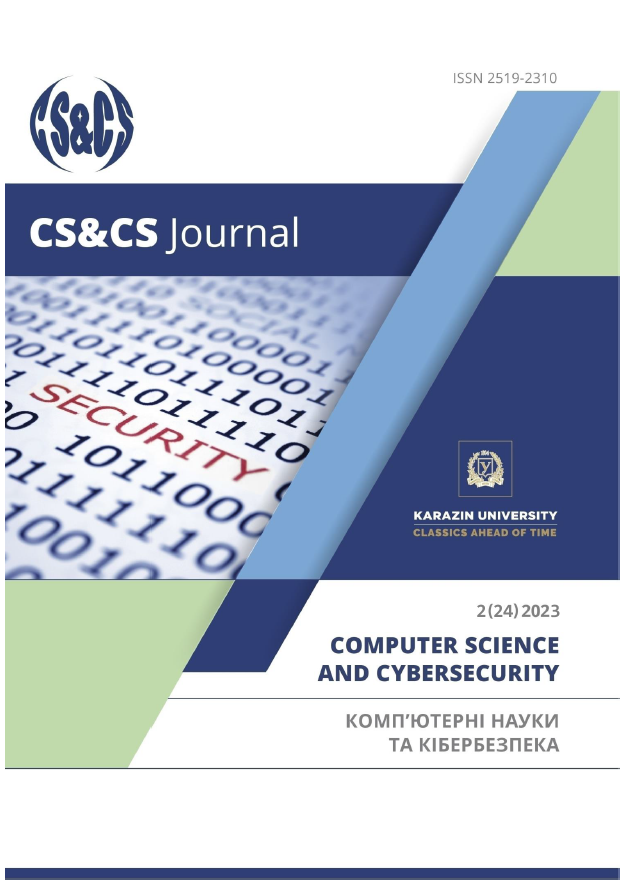Problematic issues of machine learning technology in law enforcement
Abstract
Law enforcement agencies increasingly use predictive and automation technologies where the core technology is often a machine learning (ML) model. The article considers the problem of accountability and responsibility of law enforcement agencies and officials connected with using of ML models. The authors point out that accountability is a key element of democratic law enforcement, but using of the predictive software can create challenges in ensuring that accountability. The article discusses how the application of ML can lead to obfuscation of responsibility and complicating accountability in «multi-agent structures» that combine humans and computational tools. Special attention is paid to the opacity of predictive algorithms and automated decision-making systems. It becomes a source of misunderstandings and caution regarding their use. The authors raise questions about how effective oversight and full reporting can be ensured when key components of the decision-making systems remain unknown to the general public, officials, and even developers of the models. The paper argues that important questions related to ML decision models can be solved without detailed knowledge of the machine learning algorithms, allowing non-ML law enforcement experts to study them in a form of intelligent control. Non-ML experts can and should review trained ML models. The authors provide a «toolkit» in the form of questions about three elements of the ML-based decision models that can be qualitatively explored by non-machine learning experts: training data, training goal, and anticipatory outcome evaluation. This approach expands the capabilities of these experts in the form of an objective assessment of the use of ML models in law enforcement tasks. This will allow them to evaluate effectiveness of the models through the prism of their own experience. The basic idea is that even without deep technical knowledge, law enforcement experts can analyze and review ML models. This approach promotes understanding of the use of machine learning technologies in law enforcement, expanding the potential of non-ML law enforcement experts.
Downloads
References
Halterlein, J. and Ostermeier, L. (2018). ‘Special Issue: Predictive Security Technologies’. European Journal for Security Research 3(2): 91–94.DOI: https://doi.org/10.1007/s41125-018-0034-z
Hughes, D. (2017). ‘Robot Investigators ‘Could Be Used to Examine Documents in Criminal Cases’. The Independent (14 December 2017). https://www.independent.co.uk (accessed 20 November 2018).
Bennett Moses, L. and Chan, J. (2016). ‘Algorithmic Prediction in Policing: Assumptions, Evaluation, and Accountability’. Policing and Society 28 (7): 1–17.DOI: https://doi.org/10.1080/10439463.2016.1253695
Ratcliffe, J. H. (2016). Intelligence-Led Policing. Abingdon, Oxon; New York: Routledge. DOI: https://doi.org/10.4324/9781315717579
Innes, M. and Sheptycki, J. W. (2004). ‘From Detection to Disruption: Intelligence and the Changing Logic of Police Crime Control in the United Kingdom’. International Criminal Justice Review 14(1): 1–24.DOI: https://doi.org/10.1177/105756770401400101
Goldstein, J. (1960). ‘Police Discretion Not to Invoke the Criminal Process: Low-Visibility Decisions in the Administration of Justice’. The Yale Law Journal 69(4): 543–594.
Burrell, J. (2016). ‘How the Machine ‘Thinks’: Understanding Opacity in Machine Learning Algorithms’. Big Data & Society 3(1): 1–12.DOI: https://doi.org/10.1177/2053951715622512
Mittelstadt, B. D., Allo, P., Taddeo, M., Wachter, S. and Floridi, L. (2016). ‘The Ethics of Algorithms: Mapping the Debate’. Big Data & Society 3(2): 1–21.DOI: https://doi.org/10.1177/2053951716679679
Strukov V.M., Uzlov D.Yu. et al. Information Technologies in Law Enforcement. Part 1. High-Tech Trends in Law
Enforcement of Foreign Countries. Kharkiv: LLC 'DISA PLUS', 2020. [In Ukrainian]
Hughes, D. (2017). ‘Robot Investigators ‘Could Be Used to Examine Documents in Criminal Cases’. The Independent (14 December 2017). https://www.independent.co.uk (accessed 20 November 2018).
Mittelstadt, B. D., Allo, P., Taddeo, M., Wachter, S. and Floridi, L. (2016). ‘The Ethics of Algorithms: Mapping the Debate’. Big Data & Society 3(2): 1–21.DOI: https://doi.org/10.1177/2053951716679679
Norwegian Board of Technology (2018). Artificial Intelligence: Opportunities, Challenges and a Plan for Norway. Oslo: Norwegian Board of Technology. DOI: https://doi.org/10.5617/nmi.9950
Lum, K. and Isaac, W. (2016). ‘To Predict and Serve?’. Significance 13(5): 14–19.DOI: https://doi.org/10.1111/j.1740-9713.2016.00960.x
Mohler, G. O., Short, M. B., Malinowski, S. et al. (2015). ‘Randomized Controlled Field Trials of Predictive Policing’. Journal of the American Statistical Association 110(512): 1399–1411.DOI: https://doi.org/10.1080/01621459.2015.1077710
Zhang, Lemoine, B. and Mitchell, M. (2018). Mitigating Unwanted Biases with Adversarial Learning. Proceedings of the 2018 AAAI/ACM Conference on AI, Ethics, and Society, ACM. pp. 335–340.DOI: https://doi.org/10.1145/3278721.3278779
Wu, X. and Zhang, X. (2016). ‘Responses to Critiques on Machine Learning of Criminality Perceptions’ (Addendum of arXiv: 1611.04135). ArXiv: 1611.04135 [Cs]. http://arxiv.org/abs/1611.04135 (accessed 8 January 2019).
Beck, C. and McCue, C. (2009). ‘Predictive Policing: What Can we Learn from Wal-Mart and Amazon about Fighting Crime in a Recession?’. Police Chief 76 (11): 18–24
Sklansky, D. A. (2008). Democracy and the Police. Stanford, CA: Stanford University Press. DOI: https://doi.org/10.1515/9780804763226
Toby Segaran (2008) Programming Collective Intelligence. Published by O’Reilly Media Inc., ISBN-10:0-596-52932-5. https://archive.org/details/programmingcolle00sega_0/page/n7/mode/2up


